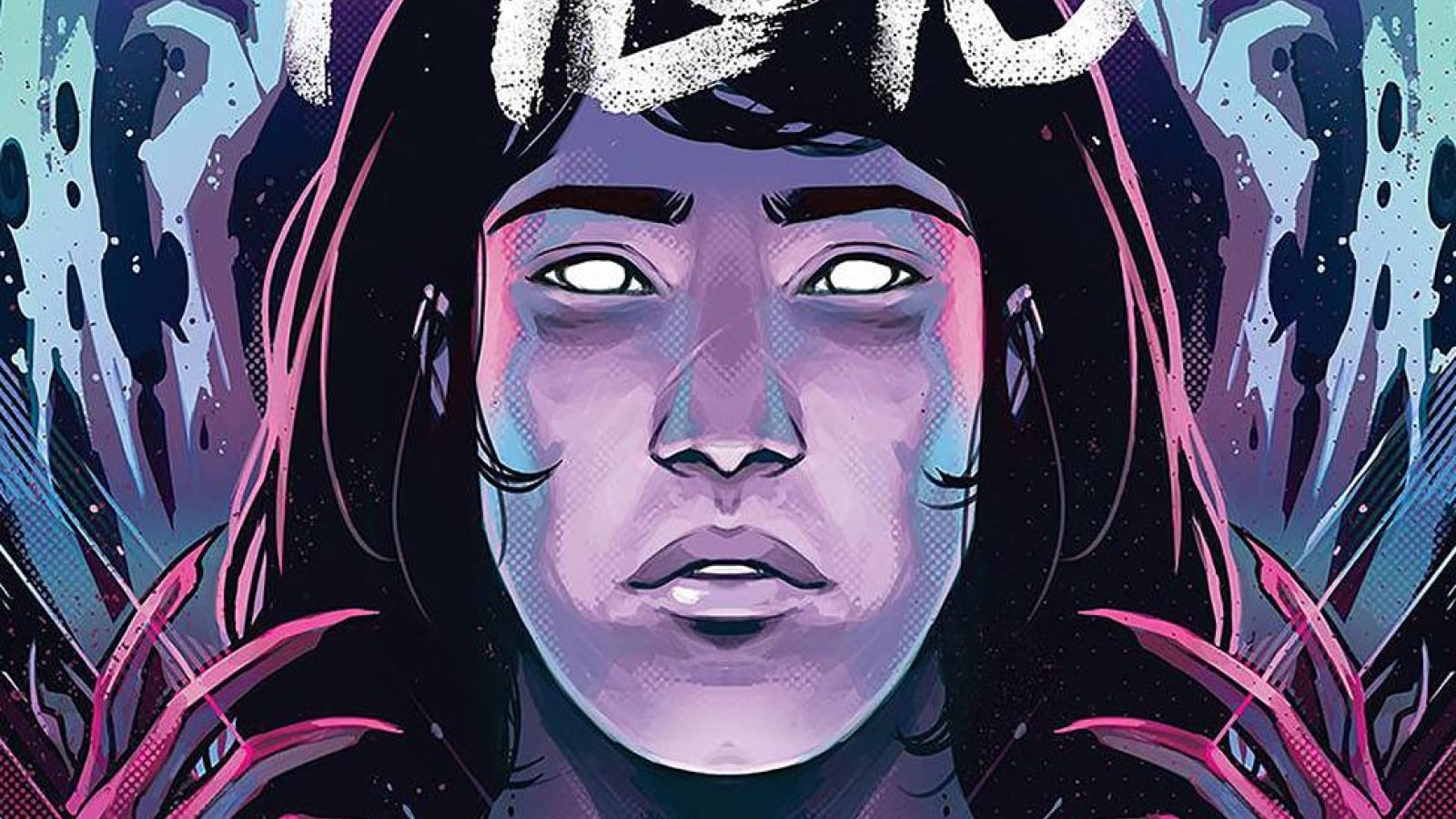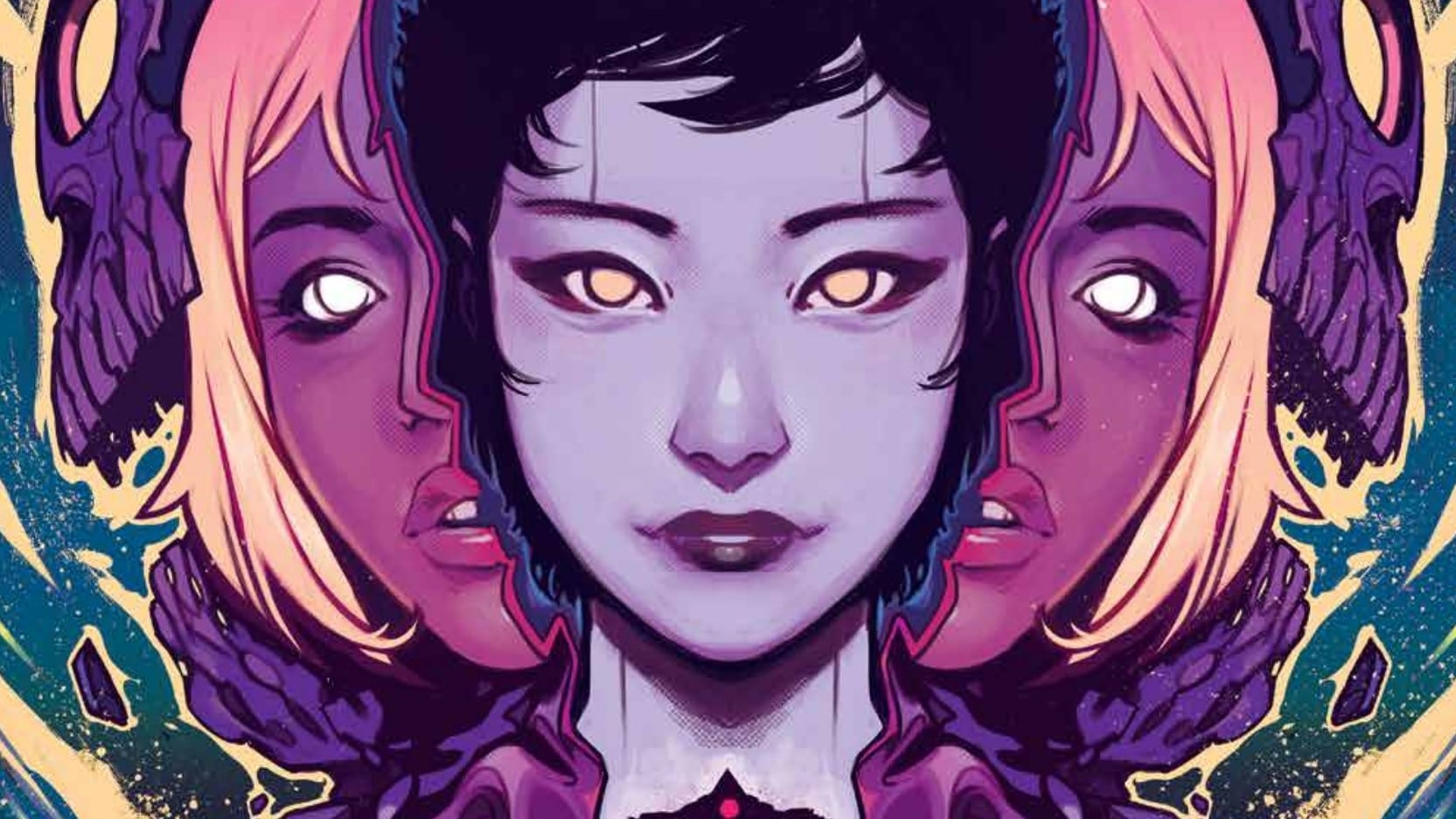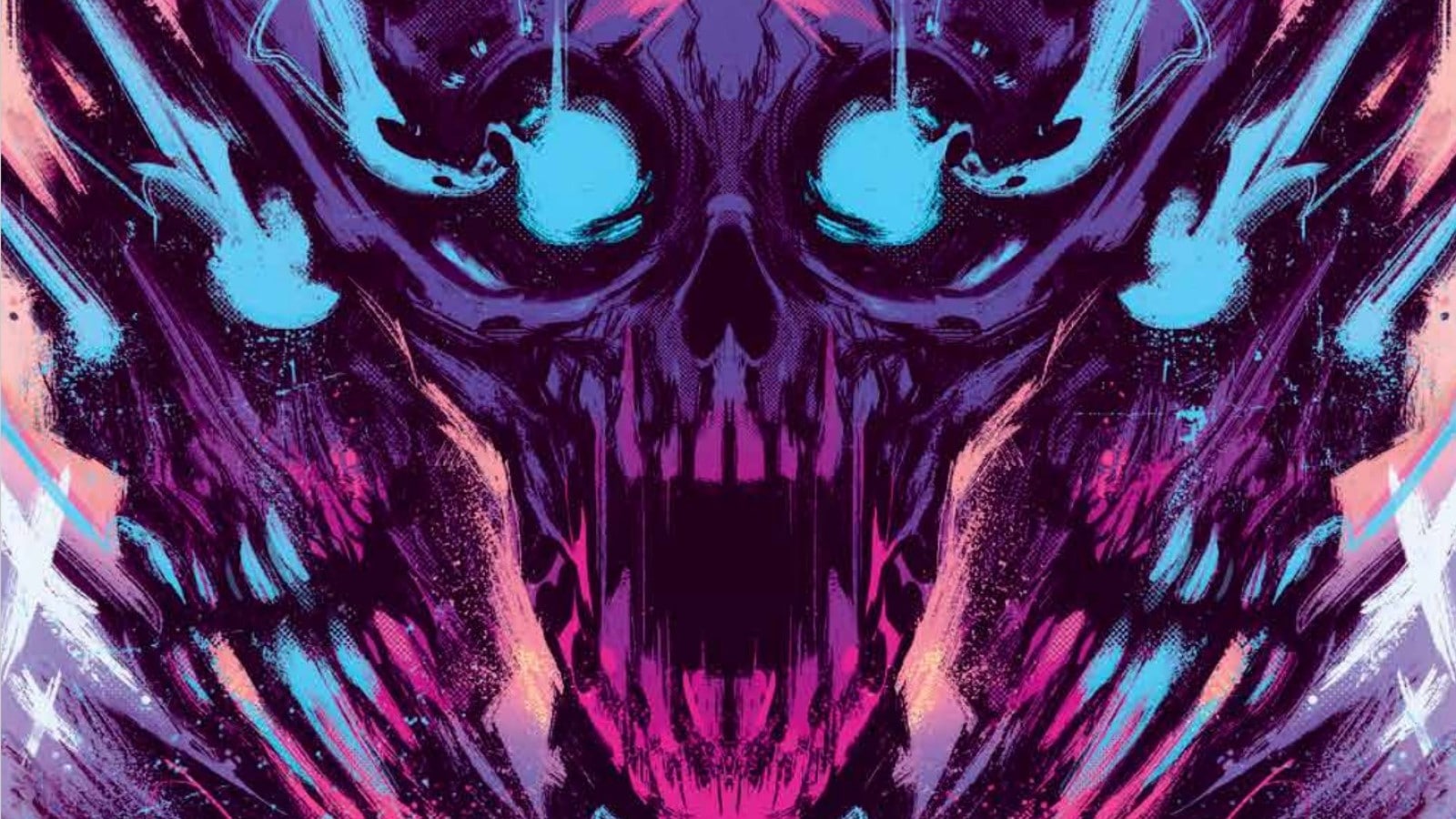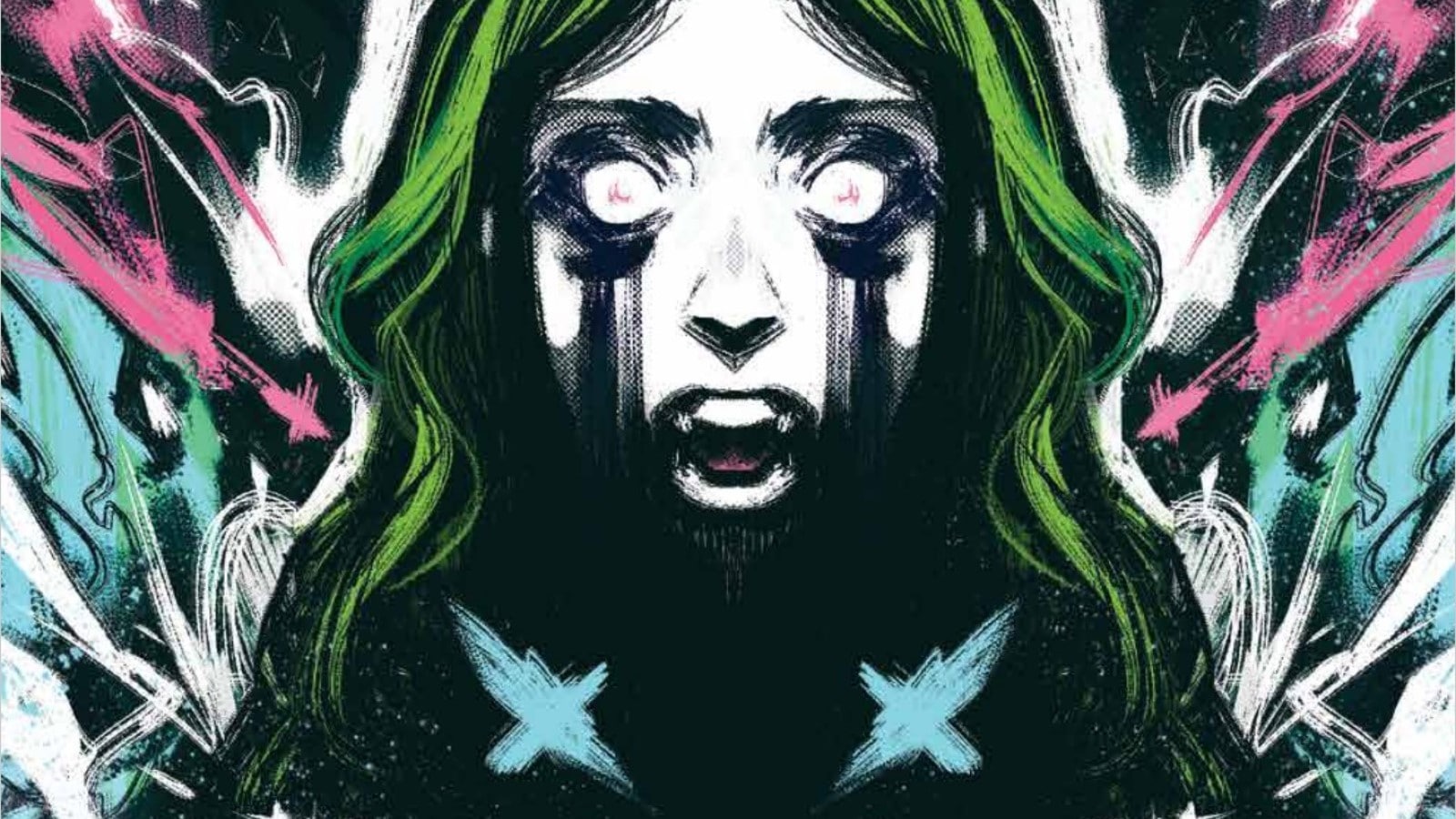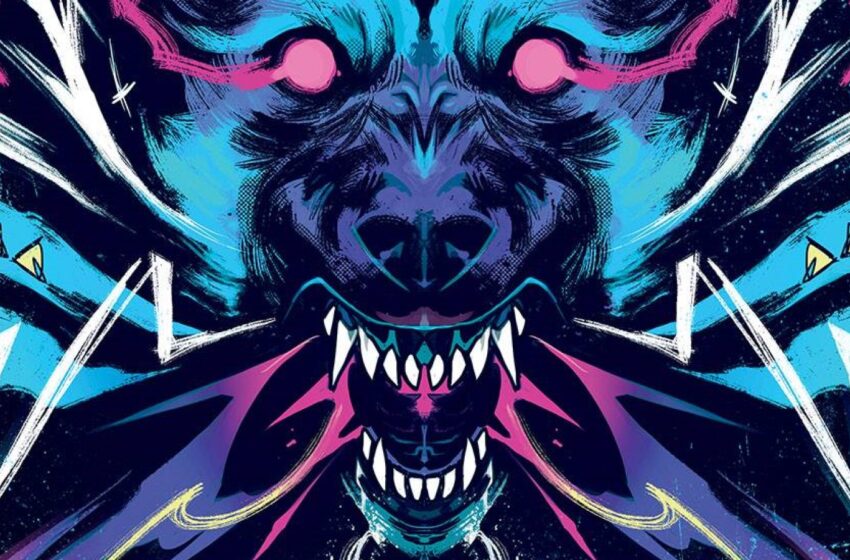It’s been three months since a haunted house walked through Santa Manos, and now the U.S. military would like a walking ghost-powered weapon of their own, thank you very much. The Home Sick Pilots might be the key to their getting one. If they can be convinced to sell out, that is. A new arc begins in Home Sick Pilots #6 by writer Dan Watters, artist Caspar Wijngaard, letterer Aditya Bidikar and designer Tom Muller.
Dan Grote: AND WE’RE BACK! And after five issues of following around Ami and the Old James House, it looks like we’re finally getting the content we crave. Forrest, it’s Meg time.
Forrest Hollingsworth: A megaton of Meg in the best issue of the series yet, you might say.
Dan: Meg-nificent.
Desert rock

Dan: This arc seems to be giving us a major setting and POV change. We’ve left Santa Manos for the Nevada desert, and instead of Ami, presumably lost to us in the great house-vs.-VHS tape battle of issue #5, we’re following Meg, who is being trained by the supernatural government contractors in System Disrupt to pilot her own ghost mech, the Nuclear Bastard. Also, Meg appears to be permanently covered in the blood of her former bandmates, a product of her entrapment in the James House. Forrest, how are you liking our new status quo?
Forrest: I’m going to be honest, I was a little worried about the post-first-arc slump that gets to a lot of indie books here, and at times the narrative hews a little too close to expository for me, especially with the introduction of System Disrupt, but there’s also so much good stuff that it’s easy to forgive.
If you’ll allow me, I want to call out the significance of the setting of the Nevada desert in particular.
Dan: DO IT!
Forrest: I suspect that this issue takes place at, or near, the Nevada National Security Site, a remote Department of Energy facility that hosted over 2,000 recorded nuclear bomb tests before the United States’ discontinuation of testing in 1992. As a result of testing, an increase in reports of cancer, tumors and other illnesses and effects were reported by the residents of St. George, Utah, where most of the fallout from testing fell. The testing, in effect, created ghosts. Ghosts of trauma and of violence both direct and indirect, and presumably, it created as good a place on Earth as any to meditate on the waging of war and the creation of weapons of mass destruction.
That Home Sick Pilots is moving at least in part to that setting, and making a device called the Nuclear Bastard central to it, is not insignificant. In the early pages when Meg says she can hear the hundreds of explosions, she means that literally and, like the Old James House before it, the implication is that this place holds memories, and pain ripe for exploration and eager for acknowledgement. We might like Meg, but it’s obvious she’s in over her head. On that front, I love this.
Dan: That’s interesting, because while we’re clearly meant to be digging into Meg as she transitions into her post-James House life, one thing we didn’t see this issue that we got a lot of with Ami was her relationship with ghosts. Part of the first arc was a fetchquest, with Ami retrieving items haunted by ghosts that belonged to the James House. Through exposition and context, we got bits and pieces of their story and watched as they pulled Ami into symbiosis and, ultimately, making the House move and fight.
With Meg, we don’t see the ghosts she’s working with (except, y’know, the ones keeping her covered in blood). They’re alluded to, but ultimately, whoever they are, they suck at teamwork because the Nuclear Bastard took one step and blew up. Our girl has some work to do if she wants to be a broken ghost mech pilot. Which, it doesn’t seem like she actually does.
A Ripping Good Time

Dan: Rip seems able to get through to Meg more than Buzz did Ami, which is surprising given how much of a mess Rip was in Vol. 1 but also speaks to the hold the House had on Ami.
But here’s a question: Given what Rip’s seen in the basement of System Disrupt, why should he be so quick to believe the House is gone and Ami and Buzz are dead?
Forrest: Dan, riddle me this: Why would anyone ever believe literally any ghost is dead?
Dan: Whoa.
Forrest: It’s one of those narrative necessities that I also frowned at, but one that sets up the issue-ending reveal very well, too — Watters is good at that, undoing the technical problems with narrative payoff. You’re also right about Rip’s arc, which I think takes a good turn here. There’s meant to be a bit of narrative mirroring in how Ami and Meg are handling things, and in how the people around them respond to that.
Ami’s trauma is abstract: We’re told about it in the first issue, but we never see it. As such she’s characterized by her relative impersonality. She floats through scenes, a kind of ghost herself, and the trauma of the James House adheres itself to her in that abstract, depressive fog way — she loses time across numerous issues. As you mentioned above, we only see her dealing with things across small time skips, and not in whole. This is difficult for Rip to understand, to deal with, but it’s also in direct opposition to Meg’s arc.
Meg’s trauma is more immediate. Rip knows what happened to her, and she also always has a visual signifier of it — the blood — with her. That’s easier to address and easier to unpack, and in some ways it’s easier to remember, too. He can’t feel for Ami, but he can see what’s happening to Meg, and that’s the difference between the arcs, and also a good way to make them feel uniquely impactful. When we’re left lingering with Meg at the end of the issue, trying the salt pills that Rip has left her, there’s an intention to that aside from just the kickass cliffhanger.
Watters wants us to recognize, as readers, the ways others are able to address and recognize pain in the narrative, and here, more direct and external, it’s easier to parse — the narrative structure itself functions as a map for what Rip is also processing. What that says for Ami, who we have yet to see, is yet to be determined but, I think, will be very important.
Dan: Lots more parallels to be drawn between the characters, for sure.
Hack the Afterlife

Dan: Once again, Caspar Wijngaard is giving us many gifts. The basement of System Disrupt has some cool f’ing toys that, were this 1987 and Sears Wish Book catalogs still a thing, I’d be asking for for Christmas. There’s a ghost tank cabin, an RV robot. They’re like Transformers meets those later lines of Ghostbusters toys where everyday people turned into monsters. Forrest, favorite bit of cool shit in this issue?
Forrest: It might be a trick of the coloring, but the suggestion that System Disrupt has a sort of underground jungle where they’re building Metal Gears is awesome — that initial panel, with the red and black robot frame hanging in the foreground against the green, ivy and plantlike stuff woven into the scaffolding in the background, is immediately striking. This idea of a below-the-desert base that defies all the odds both natural and supernatural.
I also love this look balanced with Rip rightfully pointing out later that they’re government-backed frauds. This performative Mad Max look is in direct contrast to Meg and Rip’s bona fide punk credentials.
Dan: That makes all the sense. I was definitely side-eyeing things like General RZOR’s wallet chain and Trish’s fishnet top-over-bikini look.
But I do need to harp on something that’s been bothering me for a couple issues now. Why, God, why did Wijngaard make RZOR look so much like Rip? Like, I get it, if you squint, RZOR’s hair is shaggy and Rip’s hair is stringy, but they’re both young white dudes with long, brown hair. It’s literally the difference between “Under Pressure” and “Ice Ice Baby.” At least Rip gets a hoodie later in the issue, but man, age RZOR up, make him a different race or gender, give him a haircut, SOMETHING. But I guess we’re well past that event horizon. SIGH.
Forrest: If it’s anything like Meg, you just revealed a major plot point that’s yet to come. Prove us wrong, Wijngaard!
Cool Miscellany, Bro
- I see you, Pulp Fiction poster, Super Soaker and generic verb use of the word “Xerox.”
- Pissfinger is a great band name.
- “When I was 19, I hacked the afterlife.” When I was 19, I (Dan) went parasailing for the first time. So I’m not sweating it either.
- If you keep negging Spam you’re gonna go from Rip to R.I.P. Not cool, dude.
- Dan briefly toyed with the idea of writing about salt’s use as a ward against the supernatural, but all I could find were a bunch of wiki pages dedicated to the long-running TV show Supernatural, a show he has never watched.

